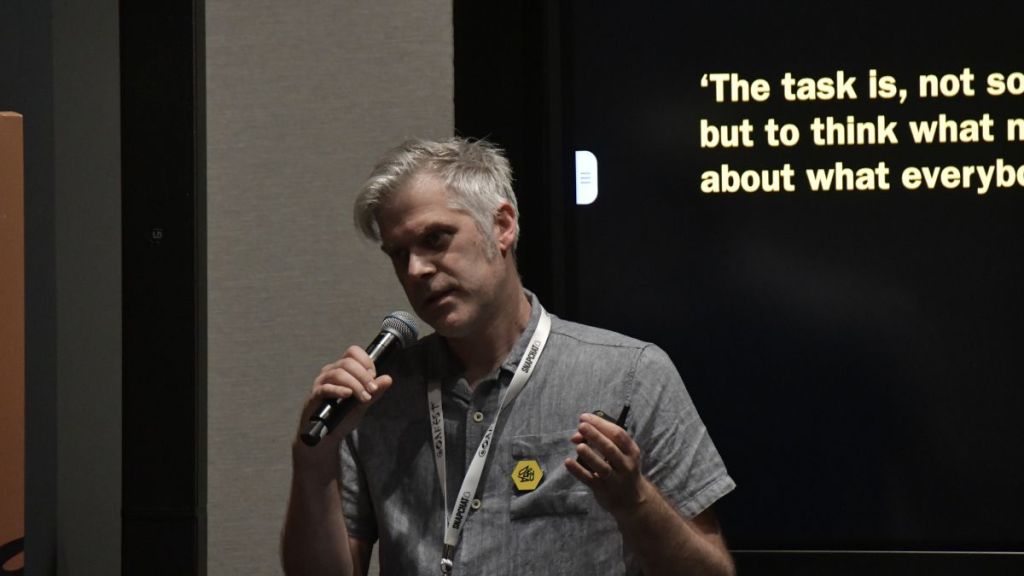With the beginning of the new year, advertising awards seem to have returned with full galore. Yet, the industry continues to face the onslaught of too many awards. From ABBYs to Cannes Lions, all the way to D&AD Awards, with its Pencils to Effie Awards, Clio Awards, among others – one thing is for sure there is no dearth of awards. However, the questions that always haunt agencies is where to invest as the cost of entering these awards has increased over the years.
One such award which has managed to remain relevant by adding innovative categories every year is D&AD, which is known for its Pencil awards. Today, the award has categories such as health, luxury, impact, among others. In a conversation with BrandWagon Online, Paul Drake, director, D&AD, talks about how artificial intelligence (AI) has impacted the creative work of agencies, along with the importance of awards. (Edited Excerpts)
With agencies becoming consultants to brands, along with the introduction of martech stacks, how is the agency business evolving? What has been the technological approach towards creative solutions?
I think there has been an expansion of the agency-studio model business. Throughout our master classes, which we were running with the Goafest, we were asked about the ways brands use creativity to get to solutions quicker, with regard to the business landscape. Looking at some of the leading agencies in London, which is the market I know best, they’re in the conversation of defining the problem and unpacking the solution for brands, faster than others. These solutions are being driven by technology, with different disciplines starting to collide and come together. Therefore, I believe agencies are, naturally, responding to these developments, sometimes leading them, with the need to get into less traditional skill spaces than they were in years ago.
AI has been deployed by Google, Meta, Amazon Ads, among others, for creating creatives and driving performance-based advertising. How much has that technology impacted the creative work of agencies, and have you seen use cases of the technology drawing more return on investment (ROI) as opposed to being dependent on it?
We noticed this development in our awards ceremony last year. In last year’s work, it was present but it wasn’t ubiquitous. Based on my conversations with agencies, I reckon they’re using this technology a lot more in their processes than they used to, with usage being more in the early stages. From what it seems, agencies have become conscious of the ROI related to creativity, which also acts as an ‘emotional connection’. Looking at the statistics, this technology is probably not used as much, in creative practices, as one might assume. Given the amount of attention it’s getting, this should change and evolve. However, I believe that the technology is still being used in a preliminary stage.
Next year, if AI-based use cases increase, do you, at your own awards ceremony, plan to introduce a category or something else related to AI?
Considering that D&AD is an industry-based platform, and based on how we provide frameworks for business-oriented needs, it will be interesting to go back to this year’s conversations, in the judging rooms, around technology. We need to assess whether the technology was seen as an innovative solution, or as a risk to the Internet Protocol (IP) address and the creator’s rights. We haven’t had a chance to really unpack that yet but, I think we’ll certainly be in conversations with the industry about the technology.
In India, there are a lot of award ceremonies such as The Abbys, Kyoorius Awards, among others, along with publishers who now have their marketing awards. So, when agency margins shrink, where does that leave the relevance of awards?
Seemingly, the answer to this is two-fold. One way of looking at it is how they inspire, with something being there about celebrating what the industry can do. I think it’s important to step back and acknowledge the best works of the industry, in a given year. If you look back, D&AD has been in existence for more than 60 years, add to that our archives, I believe it’s almost a time stamp of where the creative industry used to be at a particular point. It’s also a historical reference point for people, for them to be able to navigate around where they want to go in the future. It allows us to have conversations about things, such as the role of the industry in climate change, or what’s the role of the industry around AI and how we should respond to it. Moreover, we direct efforts towards developing our master classes, our student program, and our night school for people who haven’t received higher education in a creative subject, and we try and use our insights from our awards to develop our curriculum, which reflects on what’s happening today along with the conversations that we have in the judging rooms about where we want to be in the future.
When you set out to do next year’s awards, is there any particular insight that you will use from this year for next year?
I think this year was, probably the first year, when we asked questions around sustainability in our product design category. Going forward, I think it will be a consideration which we will take into account for that particular category. We’re always trying to reflect, both society and our industry, when we design our awards. I’m sure there’ll be the emergence of new categories, along with the redefining of some of those present categories.
When judging award entries, is data more important or emotions, or do they carry a collective purpose?
I mean, we look at the creative side. We aim to reward small projects, as well as those which might have had a massive media spend. Therefore, for us, the criteria comes down to an idea’s originality, execution, and relevance, with relevance being an important point. We don’t believe in handing awards, purely, on the basis of data.


